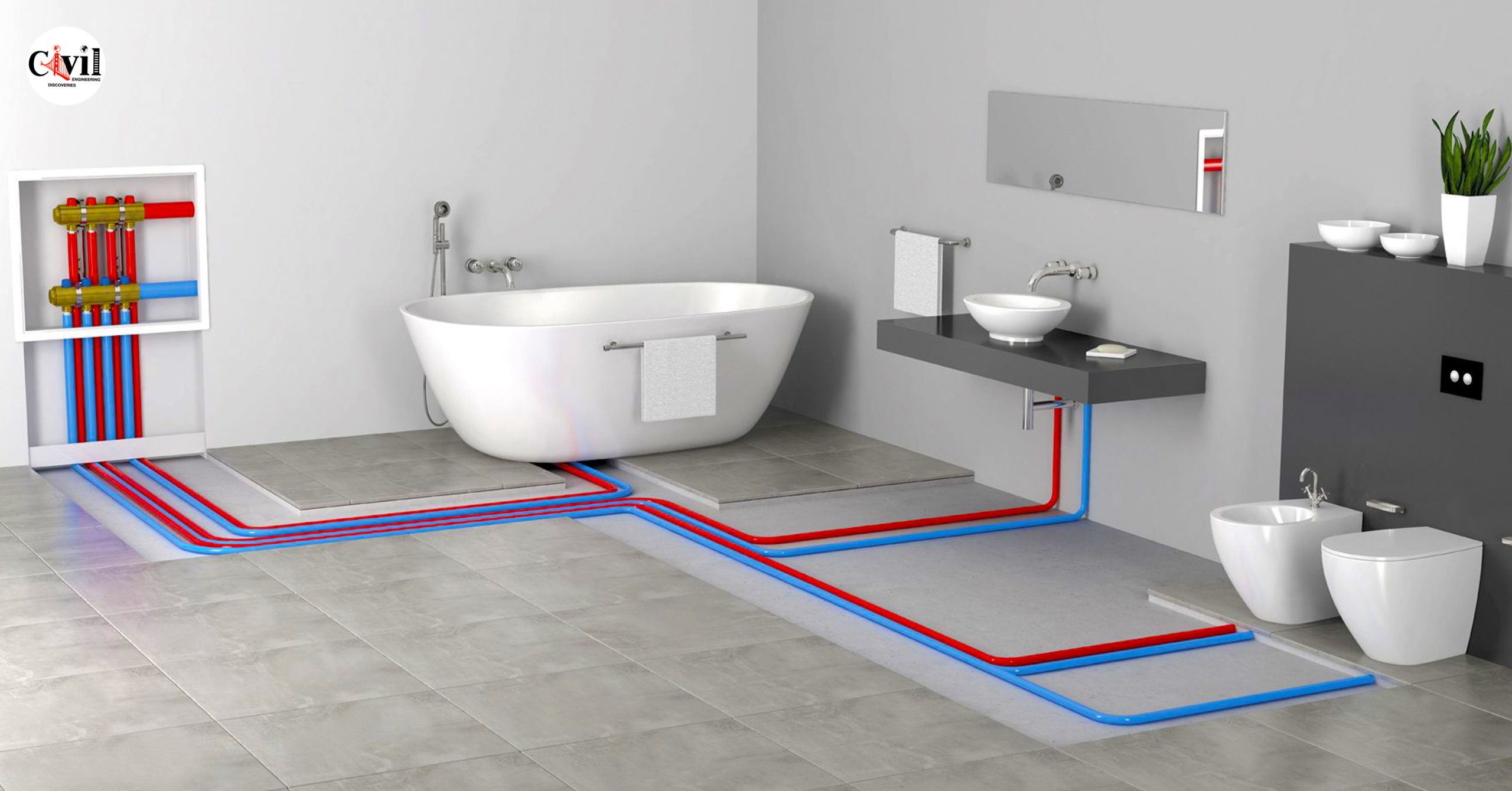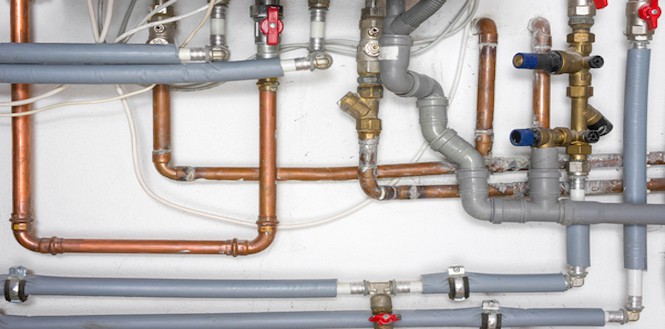The Fundamental Elements of Your Property's Plumbing System
Suggested SiteThe content in the next paragraphs on the subject of Understanding Your Home's Plumbing Anatomy is definitely intriguing. Don't miss it.

Comprehending how your home's pipes system functions is necessary for each homeowner. From providing clean water for alcohol consumption, cooking, and bathing to securely removing wastewater, a well-maintained plumbing system is critical for your family members's health and wellness and comfort. In this extensive guide, we'll check out the detailed network that makes up your home's plumbing and offer pointers on maintenance, upgrades, and taking care of common issues.
Introduction
Your home's pipes system is greater than just a network of pipelines; it's an intricate system that ensures you have accessibility to clean water and reliable wastewater removal. Understanding its components and how they interact can aid you avoid expensive repair services and make certain every little thing runs smoothly.
Fundamental Parts of a Pipes System
Pipelines and Tubing
At the heart of your plumbing system are the pipes and tubing that bring water throughout your home. These can be constructed from numerous products such as copper, PVC, or PEX, each with its benefits in regards to durability and cost-effectiveness.
Fixtures: Sinks, Toilets, Showers, etc.
Fixtures like sinks, toilets, showers, and bathtubs are where water is used in your home. Comprehending exactly how these fixtures link to the plumbing system helps in diagnosing problems and planning upgrades.
Valves and Shut-off Points
Valves control the circulation of water in your pipes system. Shut-off shutoffs are critical during emergencies or when you require to make fixings, permitting you to separate parts of the system without interrupting water flow to the whole home.
Water System System
Main Water Line
The main water line connects your home to the municipal water supply or an exclusive well. It's where water enters your home and is dispersed to different fixtures.
Water Meter and Stress Regulatory Authority
The water meter steps your water use, while a stress regulator ensures that water moves at a risk-free pressure throughout your home's pipes system, avoiding damage to pipelines and components.
Cold Water vs. Warm water Lines
Understanding the difference between cold water lines, which provide water straight from the main, and warm water lines, which lug warmed water from the water heater, aids in fixing and planning for upgrades.
Water drainage System
Drain Water Lines and Traps
Drain pipes lug wastewater far from sinks, showers, and bathrooms to the sewer or septic system. Traps avoid sewage system gases from entering your home and also trap particles that can cause blockages.
Ventilation Pipes
Ventilation pipelines allow air into the water drainage system, protecting against suction that might slow drain and create catches to vacant. Appropriate air flow is vital for maintaining the honesty of your pipes system.
Relevance of Correct Drain
Making sure proper water drainage stops back-ups and water damages. Frequently cleaning up drains and maintaining traps can protect against pricey repair work and expand the life of your plumbing system.
Water Heating System
Sorts Of Water Heaters
Hot water heater can be tankless or typical tank-style. Tankless heating units heat water as needed, while tanks keep warmed water for prompt use.
Updating Your Plumbing System
Reasons for Updating
Updating to water-efficient components or replacing old pipes can enhance water high quality, minimize water costs, and increase the value of your home.
Modern Plumbing Technologies and Their Benefits
Check out modern technologies like clever leakage detectors, water-saving commodes, and energy-efficient water heaters that can save money and decrease ecological influence.
Expense Considerations and ROI
Calculate the in advance expenses versus long-lasting financial savings when taking into consideration pipes upgrades. Lots of upgrades spend for themselves via lowered energy bills and less repairs.
How Water Heaters Attach to the Pipes System
Recognizing just how hot water heater attach to both the cold water supply and warm water circulation lines aids in identifying problems like inadequate hot water or leaks.
Maintenance Tips for Water Heaters
Frequently flushing your hot water heater to remove debris, inspecting the temperature level setups, and checking for leakages can prolong its life expectancy and improve power efficiency.
Common Plumbing Issues
Leakages and Their Causes
Leaks can happen as a result of aging pipelines, loose installations, or high water pressure. Resolving leakages immediately avoids water damage and mold development.
Obstructions and Blockages
Obstructions in drains pipes and bathrooms are commonly triggered by flushing non-flushable items or a buildup of oil and hair. Making use of drainpipe screens and being mindful of what drops your drains pipes can avoid blockages.
Signs of Pipes Issues to Look For
Low water stress, sluggish drains, foul odors, or uncommonly high water bills are indicators of prospective plumbing troubles that must be dealt with promptly.
Plumbing Upkeep Tips
Routine Inspections and Checks
Set up annual pipes assessments to catch issues early. Seek indications of leaks, rust, or mineral buildup in taps and showerheads.
Do It Yourself Maintenance Tasks
Easy tasks like cleansing faucet aerators, checking for commode leaks using color tablets, or insulating exposed pipelines in chilly climates can stop major plumbing concerns.
When to Call a Professional Plumbing
Know when a plumbing issue calls for professional expertise. Attempting complicated repairs without appropriate knowledge can cause even more damage and higher repair work prices.
Tips for Decreasing Water Use
Simple routines like dealing with leaks immediately, taking much shorter showers, and running full lots of laundry and meals can preserve water and lower your energy expenses.
Eco-Friendly Plumbing Options
Consider sustainable pipes products like bamboo for flooring, which is durable and environment-friendly, or recycled glass for kitchen counters.
Emergency situation Preparedness
Actions to Take Throughout a Plumbing Emergency
Know where your shut-off shutoffs are located and exactly how to switch off the water in case of a burst pipe or major leak.
Relevance of Having Emergency Situation Calls Handy
Keep get in touch with details for neighborhood plumbings or emergency services conveniently available for quick action throughout a pipes situation.
Environmental Effect and Preservation
Water-Saving Components and Devices
Installing low-flow faucets, showerheads, and toilets can considerably reduce water usage without compromising efficiency.
DIY Emergency Fixes (When Appropriate).
Short-lived solutions like utilizing air duct tape to spot a leaking pipe or placing a container under a trickling tap can decrease damage till a professional plumbing professional arrives.
Conclusion.
Understanding the composition of your home's plumbing system equips you to keep it properly, conserving money and time on repair services. By adhering to normal upkeep regimens and remaining educated concerning modern-day plumbing technologies, you can ensure your pipes system operates efficiently for years to come.
Exploring Your Homes Plumbing Anatomy
Water Supply System
Main Water Line: This is where water enters your home from the municipal supply or a private well. Water Meter: Typically located near where the main water line enters the property, it measures the amount of water used. Shutoff Valve: It s crucial to know where this is in case of emergencies. It allows you to turn off the water supply to the entire house. Pipes and Fittings: These distribute water throughout your home. Materials can include copper, PVC, or PEX. Drain-Waste-Vent (DWV) System
Drains: Located in sinks, showers, and tubs, these carry wastewater away. Traps: U-shaped pipes under sinks that hold standing water, blocking sewer gases from entering the home. Vents: Pipes that lead from the DWV system to the outside, preventing vacuum formation and allowing gases to escape. Sewer Line: Carries all wastewater from the home to the municipal sewer system or a septic tank. Fixtures and Appliances
Sinks, Toilets, and Showers Dishwashers and Washing Machines Water Heaters Maintenance Tips
Regularly check for leaks in exposed pipes and around fixtures. Inspect the water heater annually for signs of wear. Clean drains and traps to prevent clogs and odors. Know how to shut off water to individual fixtures. When to Call a Professional
Major leaks or burst pipes Installation of new pipes or fixtures Septic tank issues Remodeling projects that involve plumbing changes Conclusion
Understanding the anatomy of your home's plumbing is key to maintaining a functional and efficient system. Regular checks and knowing when to call in the experts can save you time, money, and stress.
https://www.mavyn.com/blog/exploring-your-homes-plumbing-anatomy

I ran across that blog posting about Plumbing Installation 101: All You Need to Know while surfing around the search engines. Make sure you pause to promote this entry if you enjoyed it. Thank you so much for your time invested reading it.
Call Today